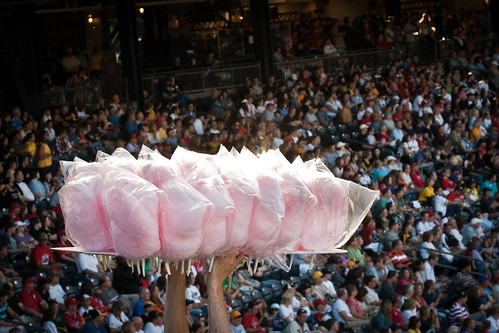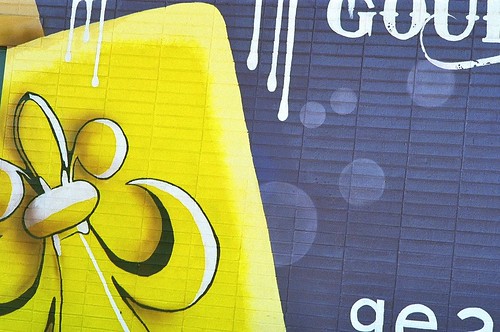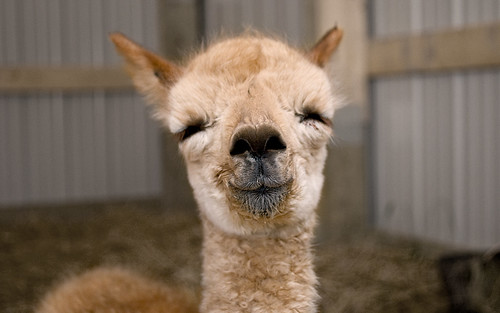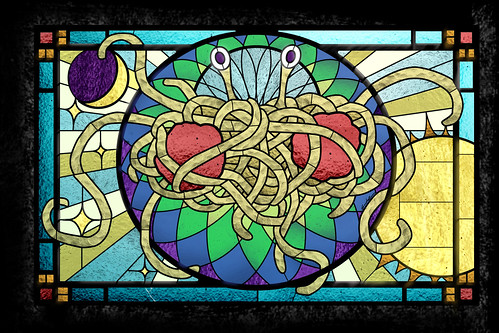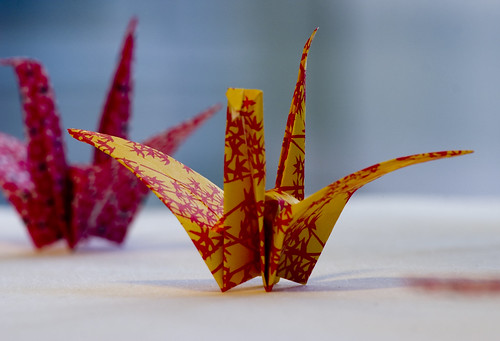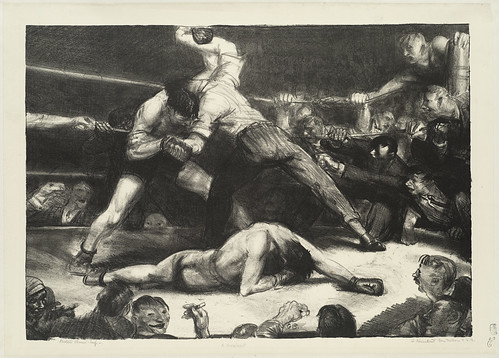We here at Wordnik love talking to professional namers about the naming process. So we were delighted to have the chance to chat with Mark Skoultchi, a partner at Catchword, a full-service naming company founded in 1998.
Mark spoke with us about Catchword’s naming process, some of his favorite (and not so favorite) types of names, and what playing Scrabble can teach you about naming.
What are some of the reasons that bring folks to the naming business, and in particular, Catchword?
Most namers follow a rather circuitous route to the profession, making stops as brand managers, advertisers, linguists, editors, creative writers, and lawyers (not surprising when you consider the importance of intellectual property law to the field of naming).
Regardless of background, almost every namer is a word lover with a passion for branding and an appreciation for how effectively a great name can influence customer loyalty and differentiate a product. In addition, namers enjoy the diversity of responsibilities that the business tends to provide. Certainly naming is a creative exercise, but it’s really so much more than that.
On top of the variety of responsibilities that working in this industry generally provides, folks gravitate toward working at Catchword because, at the risk of sounding immodest, we’re a leader in this business space, and we promote a culture of innovation. In fact, we hold quarterly Innovation Weeks during which we ask and try to answer how we, as a company and an industry, could be evolving and doing things better.
What types of customers and clients do you work with?
We’ve named pretty much everything you can think of, having worked with over 500 clients in all sorts of industries, including Canon, Chipotle, eBay, Fitbit, Intel, and Starbucks.
In general, we tend to service larger, multinational organizations that have broader naming needs, such as naming strategy, architecture, and protocol as well as global linguistic analysis and international trademark counsel. Sure, we come up with cool names for products that span technology, healthcare, F&B [“food and beverage”] and everything in between, but our clients require more than just a cool name. They require strategic guidance and help ensuring names are available and non-offensive in the global markets in which they compete.
Lately, we’ve worked with many more tech and healthcare clients, as those industries are really flourishing. In fact, the naming industry is a pretty useful barometer of which industries are doing well.
Please describe your naming process. Do you usually start with ideas, or do you find your customers often have their own ideas already?
Catchword’s naming process involves both strategic and creative phases. At the outset of an assignment we’re focused on understanding our client, their portfolio of products, the space in which they compete, and how they position themselves in the market. It’s imperative to understand their business and overall branding objectives before beginning any creative work!
Once we have a really solid understanding of their business, we’ll develop a range of strategies and approaches to naming the brand in question, and codify all the information (including messaging, style and tone) in a creative brief for the assignment. At that point, we can begin the actual creative work, which involves the development of literally thousands of names.
Catchword is a strong proponent of quantitative creativity – i.e., the more is more approach. Given the enormous legal, linguistic, and subjective hurdles names must clear, it’s essential to exhaust every creative avenue, and ideate as many names as possible!
Over the course of several name review meetings with our clients, we’ll present a selection of names that map to our strategies, reflect the creative parameters, and have cleared a preliminary trademark screen. Depending on the client, we’ll often conduct either linguistic and cultural screening on preferred names, or customer research to gain further insight to assist with the decision making process.
The goal is to help guide our client toward a shortlist of viable brand name solutions that can advance to a comprehensive trademark evaluation.
How do you use linguistics and psychology in the naming process?
This question is interesting because it demonstrates how the best naming process takes on a multidisciplinary approach.
From the outset of a project, we make sure we know exactly how our client identifies themselves and how their audience perceives them and their products or services. When we really understand the target demographic, we gain insight into what motivates them to make a purchase and the factors that might influence a purchase decision.
For example, if our client’s target demographic is highly educated, sociable young women, we know that we’ll want to focus on names that suggest femininity and fun, but only with a sophisticated and mature tonality. In short, we use psychology to understand what types of names will most resonate with the audience in question.
Our inner linguist comes to the forefront when we perform a linguistics screen near the end of the naming process. We’ll ask respondents in relevant foreign languages to help us determine if name finalists have unforeseen connotations or are difficult to pronounce because of things like consonant clusters or nonnative vowel sounds. If a company is going to release a product in Germany, they want to ensure that it doesn’t sound like the German word for ‘vomit.’ Equally often, though, linguistics screening will uncover unintended positive associations that might make a name an even stronger candidate in that particular region.
In addition to looking at semantic associations of a name in a particular region, we’ll often evaluate the name’s compatibility with a brand’s pre-existing associations as well as the new concept being marketed there.
What are some mistakes you’ve seen companies make in terms of naming?
There are countless mistakes companies make when attempting to name their products, services, or themselves! The most common mistake is underestimating the enormous challenge of legally clearing a name, developing too few ideas, and ending up with no viable name options after comprehensive legal evaluations.
Another mistake is becoming fixated on adopting an obvious real English word for a brand. Certainly real English words are great and oftentimes viable name options for brands, but expecting a name like “Beacon” to be available as a trademark in the financial business space, for instance, is setting yourself up for naming failure.
Another common mistake companies make is to pigeonhole their products and services by adopting names that are appropriate today and even next year, but perhaps not in five years. When naming, it’s critical to plan for the future and try to anticipate shifts in business and product focus. You don’t want to outgrow and have to rename your products just as they’re achieving market success!
What’s one of your favorite naming stories?
In the 17 years since Catchword’s founding we’ve collected countless naming stories. From the time we were invited to Ben & Jerry’s almost magical Vermont office to present wacky and wonderful name ideas for a new ice cream sandwich (“Cookie Wookie” was a big hit), to working with Meg Whitman of eBay to develop a name for an international online classifieds business (i.e., “Craigslist” for the rest of the world), we’ve had our share of fun, funny, exciting, and sometimes weird experiences.
However, the most memorable naming stories are probably the ones that involved the most exceptional outcomes. That is, projects that presented huge challenges and delivered incredible results.
One recent example is Premise Health. Premise Health is a merger of CHI and Take Care, the two largest companies in the onsite healthcare space. The client team included the top executives and boards of both companies as well as the investment firm that was financing the merger. The size and complexity of the project team alone qualified this assignment as unusually challenging. Add to the project team makeup an incredibly saturated set of trademark classes (both healthcare and technology classes, yikes!) and we knew we had our work cut out for us.
Amazingly, we were able to reconcile the varying name preferences among the team members, navigate the choppy legal waters, and guide the group toward not just one name that everyone loved and that was available as a trademark, but SEVEN. That sort of outcome is unusual, even for Catchword!
What are some names that you particularly like?
Naturally, we love so many of the names we’ve developed, from the highly intuitive and descriptive names, to the suggestive, to the more abstract and fanciful. Certainly we adore the assignments that allow us to stretch our creative wings and produce really clever pieces of wordplay, coinings or linguistic manipulations, but we’re no less proud of the more straight ahead names we’ve created that serve as smart business solutions for our clients.
With that in mind, some of the names we’re particularly proud of are Crazy 8 (Gymboree’s children’s clothing store), Dreamery (Dreyer’s ice cream brand), Javiva (Peet’s blended iced beverage), Refreshers (Starbucks’s beverage line), Photoshop Elements (the lighter version of Adobe’s leading image editing software), Upwork (Elance’s freelance platform), Mochidoki (a premium mochi ice cream product), Vudu (a streaming video service), and all the Fitbit fitness trackers we’ve named, including Zip, One, Flex, Force, and Surge.
Are there any naming trends you’d sooner see die off?
The names that try to be so unique that they sacrifice all meaning, ability to be spelled, and memorability are not long for this world. We recognize that many naming trends stem from the challenge that new businesses face of obtaining a domain name and trademark, but there are ways to get around these obstacles that don’t involve using a combination of letters you’d normally exchange in Scrabble.
We make sure to steer our clients clear of naming trends, because a name should allow you to stand out, not show how you’re the same. Nevertheless, there are certain ‘trends’ that are timeless, such as short, real-word nouns (e.g., Nest, Apple, Clover) and smart wordplay. The best names tell a story that is unique to the client’s brand, resonate with audiences and therefore stand the test of time.
Now for the most important question of all: please tell us about your stress reduction specialist, Doogie.
Doogie is our best compensated employee at Catchword, receiving far and away the most hugs. An expert in the “arf” of naming, he often inspires the creative team with his diligent, prolonged meditations on his favorite chair and his dogged pursuit of the UPS man.
Few people know that he is actually an intergalactic superhero from the planet Endor (he misses his Ewok brothers dearly). One day he forgot to switch back to his alter ego before coming to work and we snapped this picture of him still dressed as SuperDoogie.
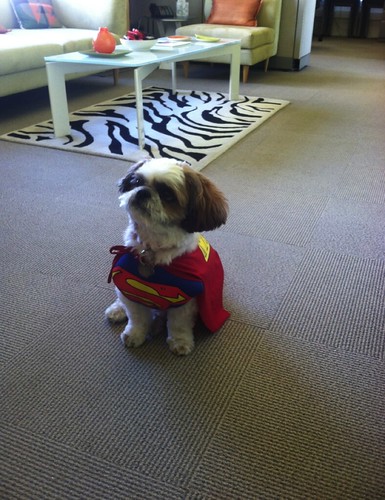
Want more on naming? Catch up on all the interviews in our Name Game series.
